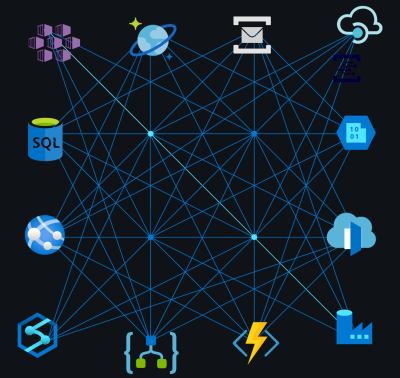Introduction
Azure Cosmos DB is a globally distributed, multi-model database service designed for mission-critical applications. It allows developers and architects to build applications that deliver low-latency, high-availability, and high-throughput access to data across the globe. Cosmos DB is a fully managed, NoSQL database service that supports multiple data models, including document, key-value, graph, and column-family. It provides a scalable and flexible platform for building modern, cloud-native applications. In this blog post are the benefits and drawbacks explained of using Cosmos DB in Azure, as well as the differences between using JSON and SQL.

Benefits of using Cosmos DB in Azure:
- High availability and scalability: Cosmos DB provides global distribution, which means your data can be replicated across multiple regions for high availability and low-latency access. This makes it an ideal choice for applications that require fast access to data, even in the face of network outages or data center failures. Additionally, Cosmos DB is highly scalable, allowing you to easily handle spikes in traffic or large amounts of data.
- Multi-model support: As mentioned earlier, Cosmos DB supports multiple data models including SQL, MongoDB, Cassandra, and Graph API. This makes it an extremely flexible database that can be used for a wide range of applications.
- Strong consistency: Cosmos DB provides strong consistency guarantees, meaning that all replicas of a piece of data will be consistent with each other. This is a critical requirement for applications that require high data accuracy and consistency.
- Low latency: Cosmos DB provides low latency access to data, with single-digit millisecond response times for both reads and writes. This makes it an ideal choice for applications that require real-time access to data.
- Automatic indexing: Cosmos DB automatically indexes all data, making it easy to query large data sets without having to manually create indexes.
Drawbacks of using Cosmos DB in Azure:
- Cost: Cosmos DB can be more expensive than traditional databases, especially for applications with large amounts of data or high traffic volumes.
- Complexity: Cosmos DB can be more complex to set up and manage than traditional databases. This is especially true if you are using multiple data models or have complex data structures.
- Limited SQL support: Although Cosmos DB supports SQL, it has some limitations compared to traditional SQL databases. For example, it does not support all SQL functions or join operations.
JSON vs. SQL
JSON is a lightweight data interchange format that is easy to read and write for humans and machines. It is a popular choice for storing data in NoSQL databases like Cosmos DB. SQL, on the other hand, is a standardized language for managing relational databases.
The main difference between JSON and SQL is that JSON is schema-less, while SQL is schema-based. In a schema-less database like Cosmos DB, data is stored in a flexible schema that can be updated without requiring changes to the database schema. This makes it easier for developers to work with data and add new fields or structures as needed. In a schema-based database like SQL, data is stored in a predefined schema that cannot be easily changed.
JSON also allows developers to store complex data structures like nested objects and arrays, which can be challenging to represent in a traditional SQL database. This makes it ideal for building applications that require flexible and dynamic data structures.
However, SQL provides more powerful querying capabilities than JSON, making it easier for developers to retrieve and manipulate data. SQL supports a wide range of query operators and functions, making it easier to write complex queries.
Conclusion
In conclusion, Cosmos DB is a powerful and flexible NoSQL database that offers many benefits for developers and architects working in Azure. Its scalable architecture, multi-model API support, and globally distributed data capabilities make it an attractive option for building modern applications that require high performance and low latency.
However, there are also some potential drawbacks to consider. Cosmos DB can be more expensive than traditional relational databases, and its complex data modeling and querying requirements may require additional development effort. Additionally, the use of multiple APIs can increase complexity for developers, requiring them to become proficient in multiple programming languages and data models.
One key difference between Cosmos DB and traditional relational databases is the use of JSON instead of SQL. JSON is a more flexible and dynamic format that allows for easier data modeling and supports complex nested structures. However, it may not be as well-suited to complex querying and reporting tasks as SQL. Developers should carefully consider their data modeling and querying needs before deciding which format to use.
Ultimately, the decision to use Cosmos DB or another database solution will depend on a variety of factors, including scalability requirements, data modeling needs, and cost considerations. By carefully evaluating these factors and understanding the benefits and drawbacks of Cosmos DB, developers and architects can make informed decisions about whether this powerful database solution is the right choice for their applications.
